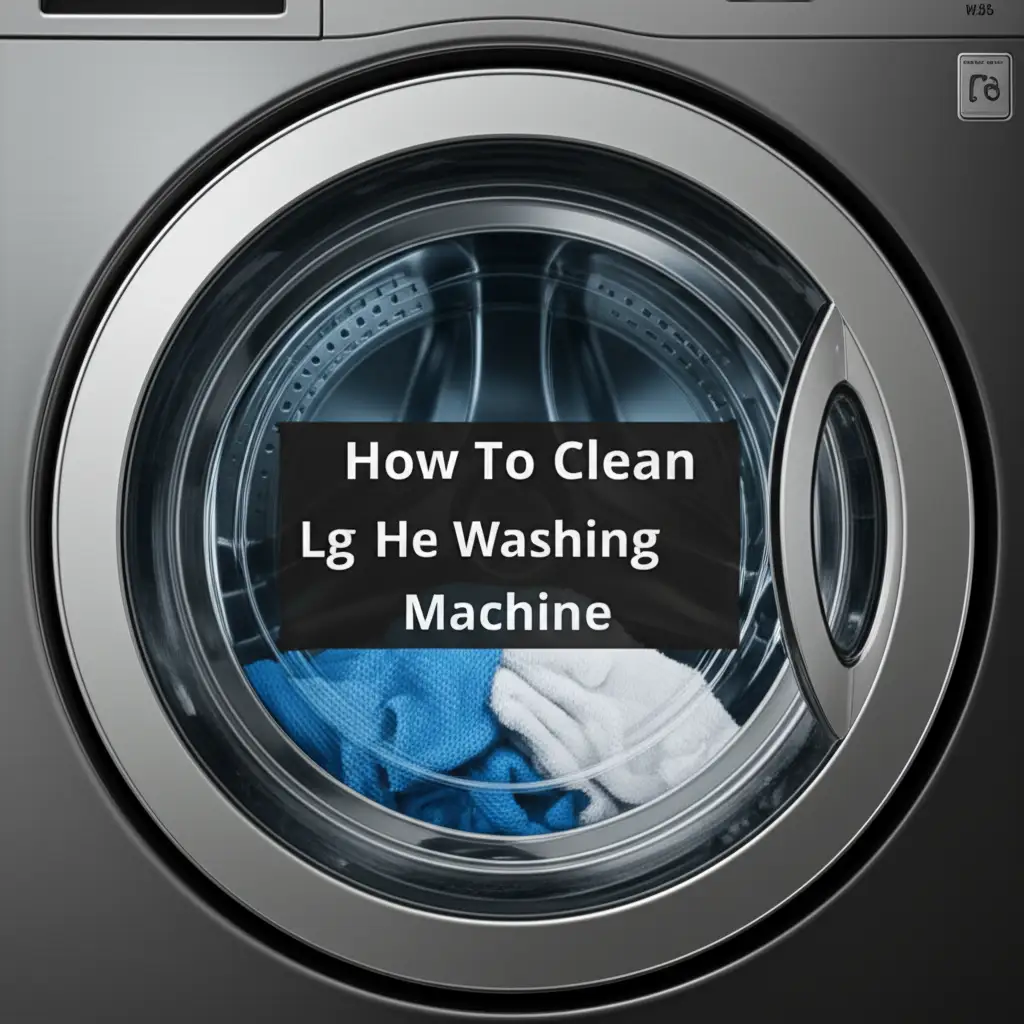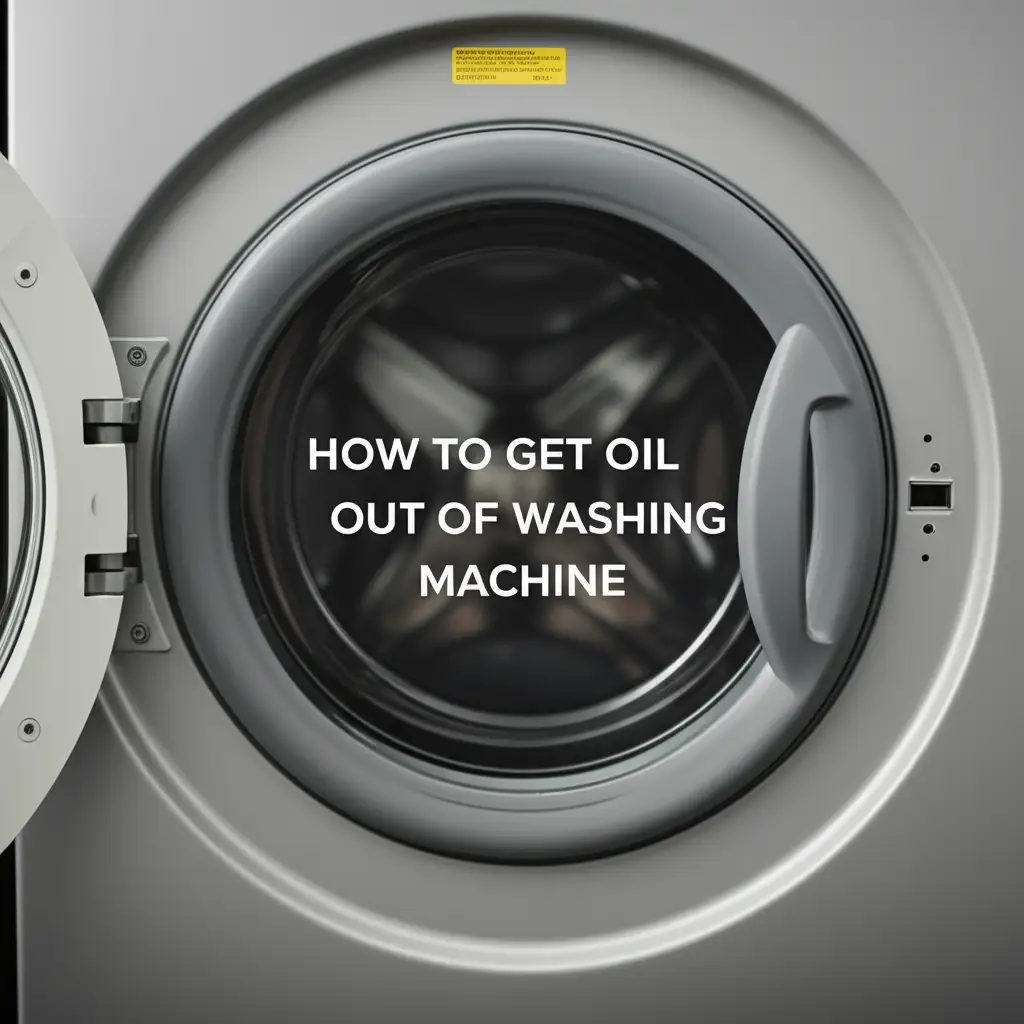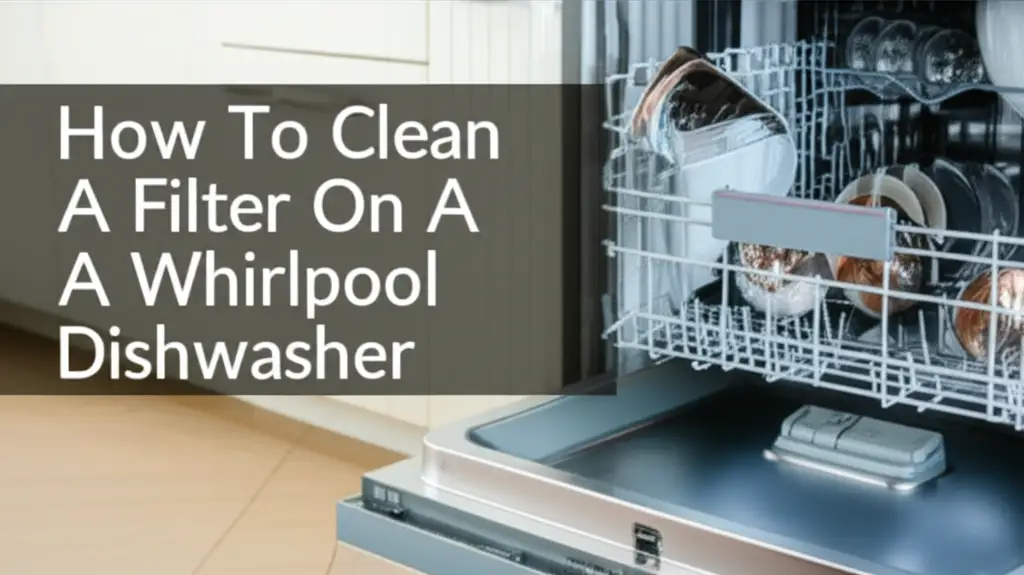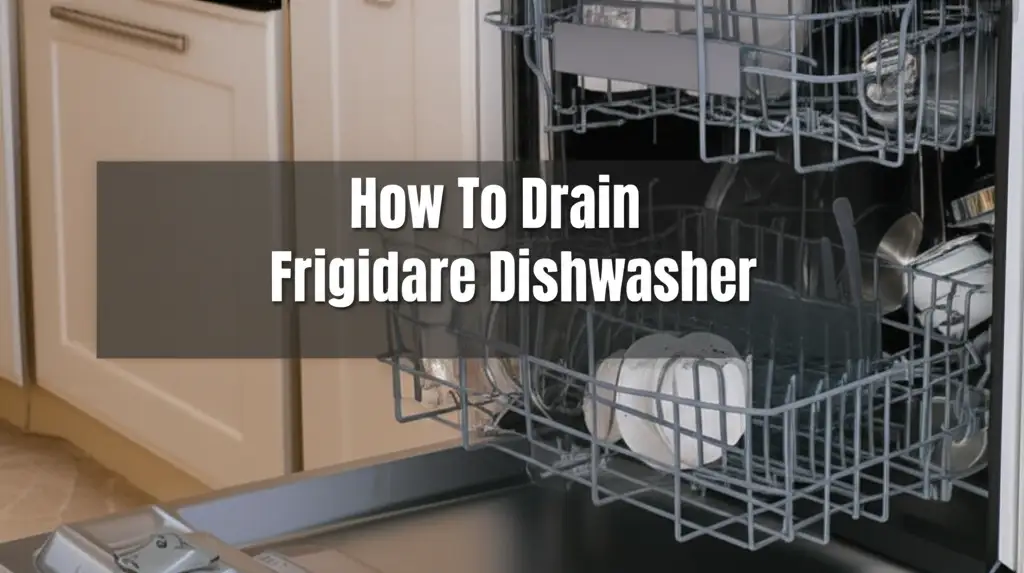· Tessa Winslow · Appliance Maintenance · 16 min read
How Do You Rebalance A Washing Machine
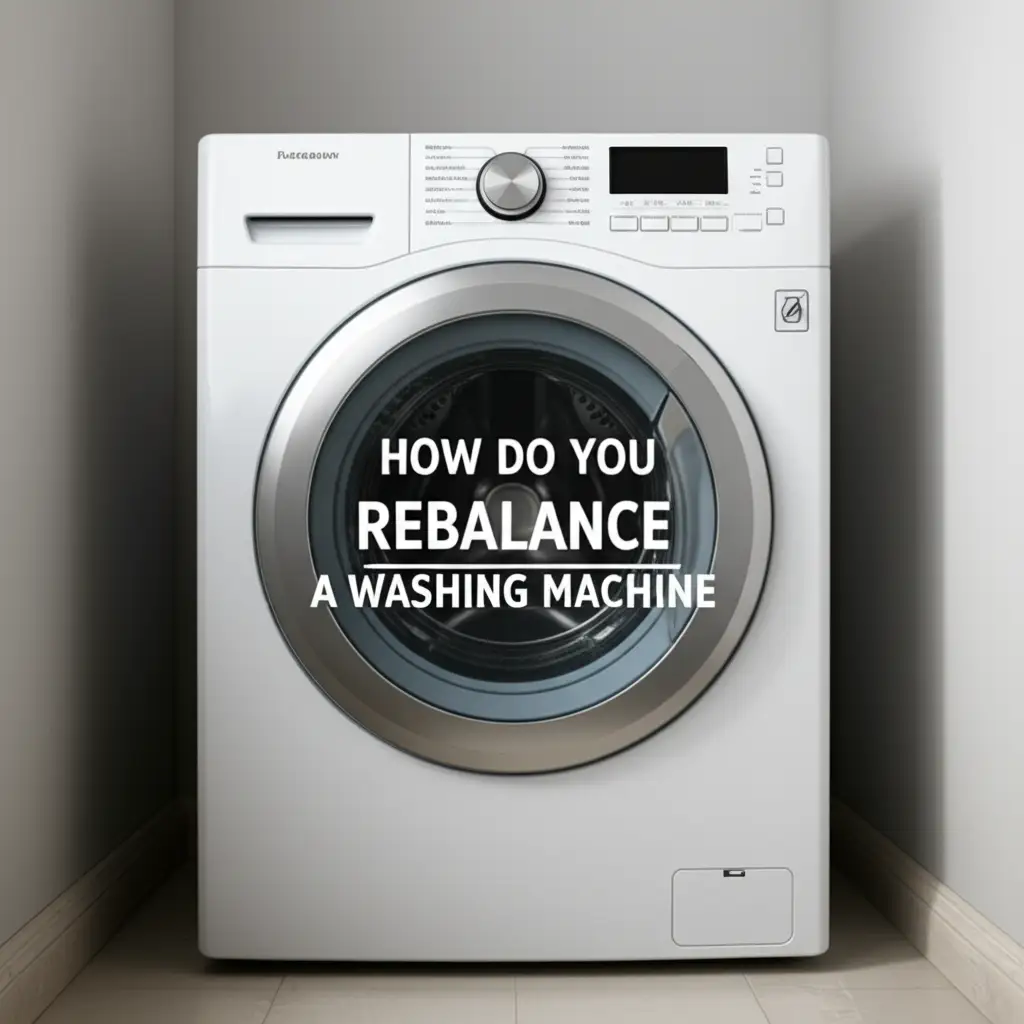
How Do You Rebalance A Washing Machine: A Complete Guide
Is your washing machine shaking like it’s trying to escape your laundry room? You are not alone. A noisy, vibrating washing machine is a common household annoyance. It is also a problem that can lead to more serious issues if ignored. Knowing how to rebalance a washing machine can save you from costly repairs and sleepless nights.
An unbalanced washer not only creates a ruckus but also stresses internal components. This shortens your appliance’s lifespan. We will explore the common reasons behind an unbalanced washing machine. We will also provide clear, actionable steps to fix it yourself. This guide will walk you through everything. You will learn to identify the problem, prepare for the fix, and execute the necessary adjustments. Get ready to enjoy quieter laundry days.
Takeaway
- Check the Load: Distribute clothes evenly, especially heavy items.
- Level the Feet: Adjust the leveling legs on your washing machine.
- Inspect Suspension: Look for worn suspension rods or springs.
- Ensure Proper Placement: Confirm the washer sits on a sturdy, level floor.
To rebalance a washing machine, redistribute the laundry inside the drum, ensuring no heavy items clump together. Then, carefully tilt the machine and adjust its leveling feet up or down until all four feet firmly contact the floor and the machine stands stable and level.
Understanding Why Your Washing Machine Gets Unbalanced
Many people wonder why their washing machine suddenly starts to shake. An unbalanced washing machine is a frequent issue, but its causes are often simple. Knowing these reasons helps you fix the problem effectively. I have seen many cases where a small adjustment made a big difference.
One primary reason is an uneven load inside the drum. When you wash heavy items like towels or jeans, they can bunch up on one side. During the spin cycle, this creates an imbalance. The washing machine then tries to spin a lopsided weight. This causes violent shaking and loud noises. It is like trying to spin a bicycle wheel with a weight attached to only one spoke.
Another common culprit is the washing machine’s leveling feet. Most washers have adjustable feet at the bottom. These feet allow you to make sure the machine sits perfectly level on your floor. Floors are not always perfectly flat. If one or more feet are not properly adjusted, the machine will wobble. This wobble becomes extreme during high-speed spinning.
Over time, parts inside the washing machine can wear out. The most common internal parts affecting balance are the suspension rods or springs. These components hold the washing machine’s tub in place. They absorb shocks and vibrations during operation. If these rods or springs become weak, broken, or dislodged, the tub can sag. This leads to severe imbalance and bumping. We will look at how to handle these later.
Sometimes, the floor itself causes the issue. A weak or uneven subfloor can flex under the washing machine’s weight. This movement can make even a perfectly leveled machine seem unbalanced. Always ensure your washing machine sits on a solid, stable surface. A combination of these factors can also contribute to your machine’s shaky behavior.
Safety First: Preparing to Rebalance Your Washing Machine
Before you start any work on your washing machine, safety is very important. You are dealing with electricity and water. Taking proper precautions prevents accidents and injuries. I always tell people to put safety first, no matter how simple the task seems.
First, always disconnect the power. Unplug the washing machine from the wall outlet. If you cannot reach the plug, turn off the circuit breaker for your laundry area. This step prevents electric shock. You do not want the machine to accidentally start while you are working on it.
Next, shut off the water supply. Locate the hot and cold water faucets behind the washing machine. Turn them fully clockwise until they are closed. This prevents water from unexpectedly flowing out if you need to move the machine or check connections. You might want to have a towel ready for any drips. This ensures you do not flood your laundry room.
You will likely need to move the washing machine to access its back or sides. Clear the area around the machine. Remove any laundry baskets, detergents, or other items. This gives you enough space to maneuver safely. You do not want to trip over anything while moving a heavy appliance.
Gather your tools before you begin. You will usually need a level tool, a wrench (often an adjustable one), and possibly a flashlight. Some people also like to use a small block of wood or shims if their floor is very uneven. Having everything ready saves time and frustration. It also makes the process smoother.
Finally, consider asking for help. Washing machines are heavy. Moving one alone can be difficult and risky. A second person can help lift, tilt, or stabilize the machine while you make adjustments. Your safety is worth the extra set of hands.
Step-by-Step Guide: Leveling the Washing Machine Feet
Leveling your washing machine is one of the easiest ways to fix an imbalance. This is often the first thing I check when a machine starts shaking. Proper leveling ensures the machine sits squarely on the floor. It distributes its weight evenly.
Start by pulling the washing machine away from the wall. This gives you room to work. You need to access the front and back leveling feet. Place a carpenter’s level on top of the washing machine. Place it first from side to side. Then place it from front to back. Note which way the bubble indicates the machine is off-level.
Most washing machines have two adjustable feet at the front and two fixed or adjustable feet at the back. Some models may have all four adjustable. For front-adjustable feet, you will usually find a lock nut on each leg. Use a wrench to loosen this lock nut. Then, you can turn the leg itself. Turning it clockwise raises the machine. Turning it counter-clockwise lowers it.
Adjust the feet one by one. You want all four feet to make solid contact with the floor. If the machine rocks, it means one or more feet are not touching. Gently push down on each corner of the machine. If you feel a wobble, adjust the corresponding leg. I like to rock the machine slightly to check for any give.
Once you have adjusted the feet, recheck the level on top of the machine. Make sure the bubble is centered both front-to-back and side-to-side. When the machine is level, tighten the lock nuts on all the adjustable feet. This locks them in place. It prevents them from loosening during future spin cycles.
After leveling, push the machine back into its spot. Be careful not to disturb the feet. Reconnect the water hoses and plug the machine back in. Run a small test load, perhaps with a few towels. Observe if the shaking has stopped or significantly reduced. If you need more general advice on fixing things yourself, you might find tips on do it yourself washing machine projects helpful.
Addressing Uneven Loads: The Most Common Cause
An uneven laundry load is the number one reason for a washing machine to go off-balance. It’s something I see very often, and it’s also the easiest to fix. Understanding how to load your washing machine properly can prevent most shaking issues. It keeps your machine working smoothly.
When you throw all your clothes into the washer without thinking, heavy items like blankets or large towels can settle on one side. This creates a weight imbalance during the spin cycle. The drum then tries to spin this off-center weight at high speeds. This results in the violent shaking and loud thumping noises you hear. It puts a lot of strain on the washer’s internal components.
To fix this, simply open the washing machine lid or door. Redistribute the clothes inside the drum. Try to spread them out evenly around the agitator (for top-loaders) or across the drum (for front-loaders). Make sure heavy items are separated and balanced by lighter items. For example, if you are washing one large blanket, try to add a few smaller towels or pieces of clothing to balance the load.
For top-loading machines, make sure items are not wrapped around the agitator too tightly. This can also cause an imbalance. For front-loaders, avoid overloading the machine. A full drum might seem efficient, but it can prevent clothes from tumbling freely. This leads to clumping and imbalance. Always refer to your washing machine’s manual for recommended load sizes.
If your machine has already started shaking badly, pause the cycle. Then, redistribute the load before resuming. Many modern washing machines have sensors that detect an unbalanced load and will pause or stop the cycle automatically. This is a helpful feature, but it still requires your intervention to rebalance the clothes. Properly loading your machine is a simple habit that significantly extends its life. If you are unsure what goes where, you can always check our guide on what goes where in a washing machine for more details.
Checking and Replacing Worn Suspension Components
If adjusting the feet and redistributing the load do not solve your washing machine’s imbalance, the issue might be internal. Worn or broken suspension components are a common cause for severe shaking. These parts help absorb the movement of the inner tub. They keep it stable during spin cycles. I find that inspecting these components can pinpoint the problem for stubborn cases.
Most top-loading washing machines use four suspension rods (also called suspension springs or damper rods). These rods connect the outer tub to the corners of the washer’s cabinet. They act like shock absorbers. Over time, the plastic or rubber bushings on these rods can wear out. This makes the rods less effective at dampening the tub’s movement. When one or more rods weaken, the tub sags or shifts to one side. This causes the entire machine to become unbalanced.
For front-loading machines, you typically find a combination of springs at the top and shock absorbers at the bottom. The springs suspend the tub from the top of the cabinet. The shock absorbers dampen the movement from below. Like suspension rods, these components can wear out or break. If a spring breaks, the tub will sag noticeably. If a shock absorber fails, the tub will bounce excessively.
To check these components, you usually need to remove the top panel or the front panel of your washing machine. This process varies by model. Always consult your appliance’s service manual or a reliable online guide for your specific model. For top-loaders, you might be able to simply lift the top panel and look down inside. For some models, you might need to know how to remove middle part of washing machine to gain better access to internal components.
Once you have access, visually inspect all suspension rods, springs, and shock absorbers. Look for signs of wear, cracks, or breaks. Test them by gently pushing down on the tub. It should return smoothly to its original position without excessive bouncing or sagging. If any components appear damaged or worn, you will need to replace them. Replacing a full set of suspension rods is often recommended, even if only one seems bad. This ensures consistent performance.
Troubleshooting Other Sources of Washer Instability
Sometimes, the washing machine still shakes even after you have leveled it, adjusted the load, and checked the suspension. This means other, less common issues might be at play. It’s important to look at the whole picture when diagnosing persistent problems. I always advise a thorough check of other potential culprits.
One overlooked factor is the flooring beneath the washing machine. If your laundry room has a weak or flexible subfloor, it can contribute to vibrations. Even a perfectly balanced washing machine will shake if the surface it sits on is not solid. Consider placing a heavy-duty rubber mat or a plywood sheet under the washer. This can help distribute the weight and provide a more stable base. Ensure this added support is also perfectly level. When thinking about appliance setup, it is good to know what plumbing do you need for a washing machine to ensure proper installation from the start.
Another possibility is an issue with the washing machine’s drum bearings. Bearings allow the inner tub to spin smoothly. If they become worn out or damaged, they can cause excessive noise and vibration. This vibration often sounds like a grinding or rumbling noise during the spin cycle. Replacing bearings is a more complex repair. It often requires significant disassembly of the washer. This repair might be beyond a typical DIY fix.
Check the washer’s internal components for any foreign objects. Small items like coins, socks, or even pet toys can sometimes get caught between the inner and outer tubs. This creates an obstruction that throws off the balance during spinning. You might hear scraping or thumping noises. This issue usually requires disassembling the tub or inspecting from beneath the washer.
Finally, consider the age of your washing machine. Appliances have a lifespan. As parts age and wear, they become less effective. An older washing machine might simply be reaching the end of its useful life. Multiple worn components can combine to create persistent imbalance. In such cases, despite your best efforts, the machine may continue to shake. Knowing when to replace versus repair is a key decision for older appliances.
When to Call a Professional: Knowing Your Limits
While many washing machine balance issues are DIY-friendly, there comes a point where professional help is the best option. It is important to know your limits when attempting appliance repairs. I have learned over time that some jobs are just too complex or risky for the average homeowner.
If you have tried all the basic troubleshooting steps—rebalancing the load, leveling the feet, and inspecting accessible suspension components—and the shaking continues, it might be time to call an expert. Persistent, severe vibrations often point to deeper mechanical issues. These can include problems with the motor, drive assembly, or severely damaged bearings. These repairs require specialized tools and expertise.
Attempting complex repairs without the proper knowledge can lead to more damage. You could also void your warranty or create a safety hazard. For example, replacing drum bearings involves dismantling a large part of the washing machine. This is a time-consuming and intricate task. If you are not comfortable with extensive disassembly and reassembly, it is better to leave it to someone experienced.
A professional appliance technician has the tools to diagnose subtle problems. They can identify worn parts that might not be obvious to an untrained eye. They also have access to genuine replacement parts. They can complete the repair safely and effectively. This often saves you frustration and ensures the repair is done correctly.
Consider the cost versus the age of your washing machine. If your machine is very old and the repair cost is high, replacing the appliance might be more economical. A technician can provide an estimate. This helps you decide whether to repair or replace. A new washer might offer better energy efficiency and modern features. For general maintenance and tips, like how to clean top loader washing machine or other specific models, regular upkeep can prevent some major issues, but not all.
Finally, if you ever feel unsafe during a repair, stop immediately. Electrical issues, heavy lifting, or dealing with water lines can be dangerous. Your safety is paramount. Do not hesitate to call a certified technician. They can handle the job safely and efficiently, giving you peace of mind.
FAQ Section
Q1: Why does my washing machine shake so much during the spin cycle? A: Your washing machine shakes often due to an unbalanced laundry load. Heavy items can clump together. This creates an uneven weight distribution in the drum. It can also be caused by the machine’s leveling feet not being properly adjusted. Worn internal suspension components can also be a reason for this shaking.
Q2: Can an unbalanced washing machine cause damage to the appliance? A: Yes, an unbalanced washing machine can cause significant damage. The constant violent shaking puts extra strain on the motor, bearings, and suspension system. This can lead to premature wear, component failure, and even structural damage to the machine itself. It shortens the lifespan of your appliance.
Q3: How often should I check my washing machine’s balance? A: You should check your washing machine’s balance whenever you notice excessive shaking or noise during the spin cycle. As a proactive measure, you can periodically check the leveling feet once or twice a year. Always ensure proper load distribution before every wash to prevent most balance issues.
Q4: What’s the difference between leveling feet and suspension rods? A: Leveling feet are external, adjustable legs at the bottom of the washing machine. They ensure the machine sits stable and level on the floor. Suspension rods (or springs/dampers) are internal components. They support and absorb the movement of the inner wash tub during operation. Both contribute to stability.
Q5: Is it safe to use an unbalanced washing machine for a long time? A: No, it is not safe to use an unbalanced washing machine for an extended period. Continuous operation of an unbalanced machine risks further damage to its internal parts. It also increases energy consumption and noise. In severe cases, the machine could even move unexpectedly, posing a safety hazard.
Q6: Can an uneven floor cause my washing machine to shake? A: Yes, an uneven or weak floor can definitely cause your washing machine to shake, even if the machine itself is perfectly leveled. If the floor flexes or slopes, it can prevent the machine from sitting stably. In such cases, using a sturdy plywood or rubber mat underneath can help create a more stable base.
Conclusion
Tackling an unbalanced washing machine might seem daunting, but as you have learned, many solutions are straightforward. From simply redistributing an uneven load to adjusting the leveling feet, you now have the tools. These initial steps often resolve the loud shaking and vibrations. Remember, a properly balanced washing machine not only operates quietly but also extends its lifespan. It reduces wear and tear on vital components.
We explored checking the machine’s internal suspension system for worn rods or springs. While this takes a bit more effort, it can be a crucial fix for persistent issues. Understanding when to seek professional help is also key. Some problems require specialized knowledge or tools.
Taking the time to rebalance a washing machine prevents future headaches and costly repairs. You are investing in the longevity of your appliance. Keep your laundry routine smooth and quiet. Start by inspecting your machine’s stability today. You can enjoy quieter laundry days with these simple maintenance tips.


